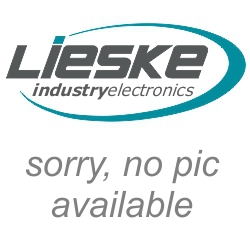Microsens MS100213DX
Networks > Media-Converters

Microsens MS100213DX
| Lieske Part No. | 1504471 |
|---|---|
| Mfg Part No | MS100213DX |
| EAN-Code | |
| Manufacturer | Microsens |
| Here only | 237,50 EUR
282,63 EUR incl. VAT
|
Further information for Microsens MS100213DX
The Small Form Factor Pluggable (SFP) is an exchangeable transceiver module used in compatible active devices. This compact module is smaller than any currently available form factor, offering the highest density per line interface. A significant portion of today's network equipment is already equipped with slots for modular optical transceivers, giving users maximum flexibility in network configuration. Thanks to its special design, installation or replacement can even be carried out during operation (hot swap) without disrupting network functionality.
The selection of the appropriate SFP module depends on the type of cables used (multimode, single mode, simplex, or twisted pair) and the required bandwidth. Standards like the Multi Source Agreement (MSA) and the SFF-8472 specification ensure a standardized design and optional digital diagnostic functions, providing additional benefits for network monitoring.
SFP modules support a maximum bandwidth of up to 1.25 GBit/s and are suitable for Gigabit Ethernet as well as Gigabit Fibre Channel applications. Depending on the model, they are designed for various distances and temperature conditions, including options for extended environments and long-distance transmission.
The selection of the appropriate SFP module depends on the type of cables used (multimode, single mode, simplex, or twisted pair) and the required bandwidth. Standards like the Multi Source Agreement (MSA) and the SFF-8472 specification ensure a standardized design and optional digital diagnostic functions, providing additional benefits for network monitoring.
SFP modules support a maximum bandwidth of up to 1.25 GBit/s and are suitable for Gigabit Ethernet as well as Gigabit Fibre Channel applications. Depending on the model, they are designed for various distances and temperature conditions, including options for extended environments and long-distance transmission.
Technical Specifications:
- Product Type: SFP (Small Form Factor Pluggable)
- Connector: LC Duplex or LC Simplex (depending on model)
- Supported Protocols: Gigabit Ethernet, Gigabit Fibre Channel
- Bandwidth: 1063 to 1250 MBit/s
- Cable Types: Multimode or Singlemode (depending on model)
- Wavelengths (TX/RX): 850 nm, 1310 nm, 1550 nm (model-specific)
- Transmission Ranges: - Multimode: Up to 0.55 km
- Operating Temperature Ranges: - Standard: 0 to +70°C
- Digital Diagnostic Monitoring (DDM): Yes (model-specific)
- Power Budget: 8.5 to 32 dB (depending on model)
- Laser Class: Class 1 (safe under normal operation)
- Singlemode: 10 km to 120 km (depending on model)
- Extended: -40 to +85°C (model-specific)
Included Items:
- 1x SFP Transceiver Module (model-specific)
- User manual (if applicable)
Safety Information:
- Never look directly into optical outputs – risk of irreversible eye damage from visible and invisible laser light.
- Always cover unused optical connectors with protective caps.
- Activate the transmission line only after all connections have been fully established.

This is an offer of:
79279 Vörstetten
http://industry-electronics.com
Tel. 07666/88499-0
Fax. 07666/88499-111
Diesen Artikel finden Sie unter:
industry-electronics.com/artikel/1504471

Lieske Elektronik e.K.
Reutener Str. 1079279 Vörstetten
http://industry-electronics.com
Tel. 07666/88499-0
Fax. 07666/88499-111
Diesen Artikel finden Sie unter:
industry-electronics.com/artikel/1504471
